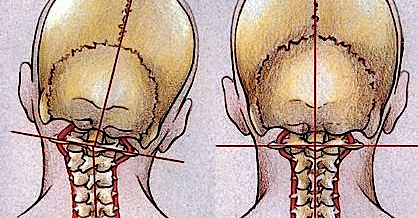
How can Chiropractic Treatment Help with Migraines?
Throbbing pain. Eye and neck pain. Blurred vision. Nausea. Aura. If you’re one of the more than 37 million people in the United States who suffers from migraine headaches, you’ve likely tried many treatments for the debilitating pain. It is likely that you have tried pain pill after pain pill in an attempt to relieve your symptoms. But, if you have not tried it yet, you may be glad to know that chiropractic treatment for migraines is a promising approach to managing the condition.
When a migraine occurs, cranial blood vessels expand (vasodilation) as opposed to a regular headache where those same blood vessels narrow (vasoconstriction). Surrounding tissues in the brain become swollen and, as you might know firsthand, quite painful. Some people suffer such intense pain from migraines that they throw up and even have trouble with their vision. The first step to any effective migraine treatment is an appropriate diagnosis, but chiropractic treatment is effective for treating many different types of headaches, including migraines.
If you have a headache, you’re not alone. Nine out of 10 Americans suffer from headaches. Some are occasional, some frequent, some are dull and throbbing, and some cause debilitating pain and nausea. What do you do when you suffer from a pounding headache? Do you grit your teeth and carry on? Lie down? Pop a pill and hope the pain goes away? There is a better alternative.
Research shows that spinal manipulation – one of the primary treatments provided by doctors of chiropractic – may be an effective treatment option for tension headaches and headaches that originate in the neck. A 2014 report in the Journal of Manipulative and Physiological Therapeutics (JMPT) found that interventions commonly used in chiropractic care improved outcomes for the treatment of acute and chronic neck pain and increased benefit was shown in several instances where a multimodal approach to neck pain had been used1. Also, a 2011 JMPTstudy found that chiropractic care, including spinal manipulation, improves migraine and cervicogenic headaches2.
Causes of Headaches

Headaches have many causes, or “triggers.” These may include foods, environmental stimuli (noises, lights, stress, etc.) and/or behaviors (insomnia, excessive exercise, blood sugar changes, etc.). About 5 percent of all headaches are warning signals caused by physical problems. The remaining 95 percent of headaches are primary headaches, such as tension, migraine, or cluster headaches. These types of headaches are not caused by disease; the headache itself is the primary concern.
The greatest majority of primary headaches are associated with muscle tension in the neck. Today, Americans engage in more sedentary activities than in the past, and more hours are spent in one fixed position or posture (such as sitting in front of a computer). This can increase joint irritation and muscle tension in the neck, upper back and scalp, causing your head to ache.
What Can a Doctor of Chiropractic Do?

- Your doctor of chiropractic may do one or more of the following if you suffer from a primary headache:
- Perform spinal manipulation or chiropractic adjustments to improve spinal function and alleviate the stress on your system.
- Provide nutritional advice, recommending a change in diet and perhaps the addition of B complex vitamins.
Offer advice on posture, ergonomics (work postures), exercises and relaxation techniques. This advice should help to relieve the recurring joint irritation and tension in the muscles of the neck and upper back.
Doctors of chiropractic undergo extensive training to help their patients in many ways beyond just treatment for low-back pain. They know how tension in the spine relates to problems in other parts of the body, and they can take steps to relieve those problems.
Benefits of Chiropractic Care

